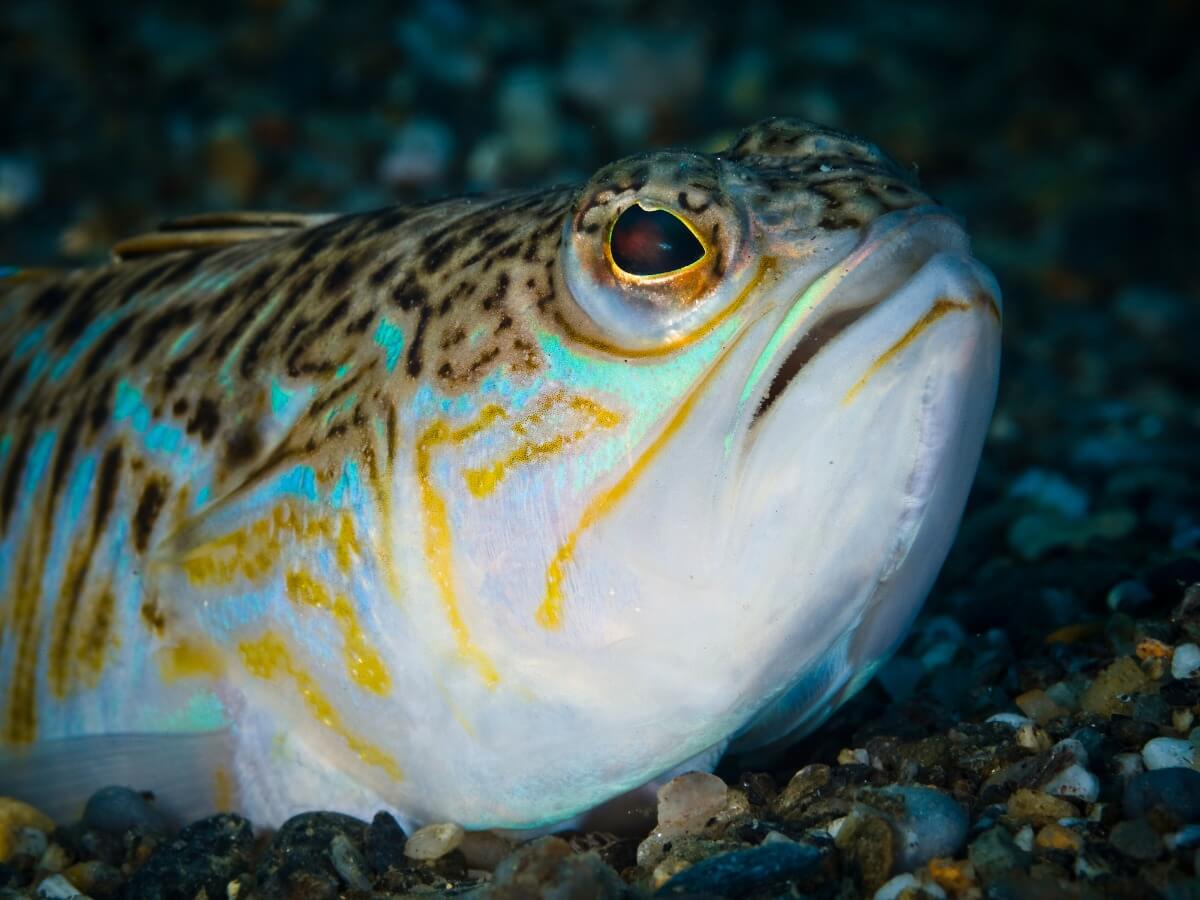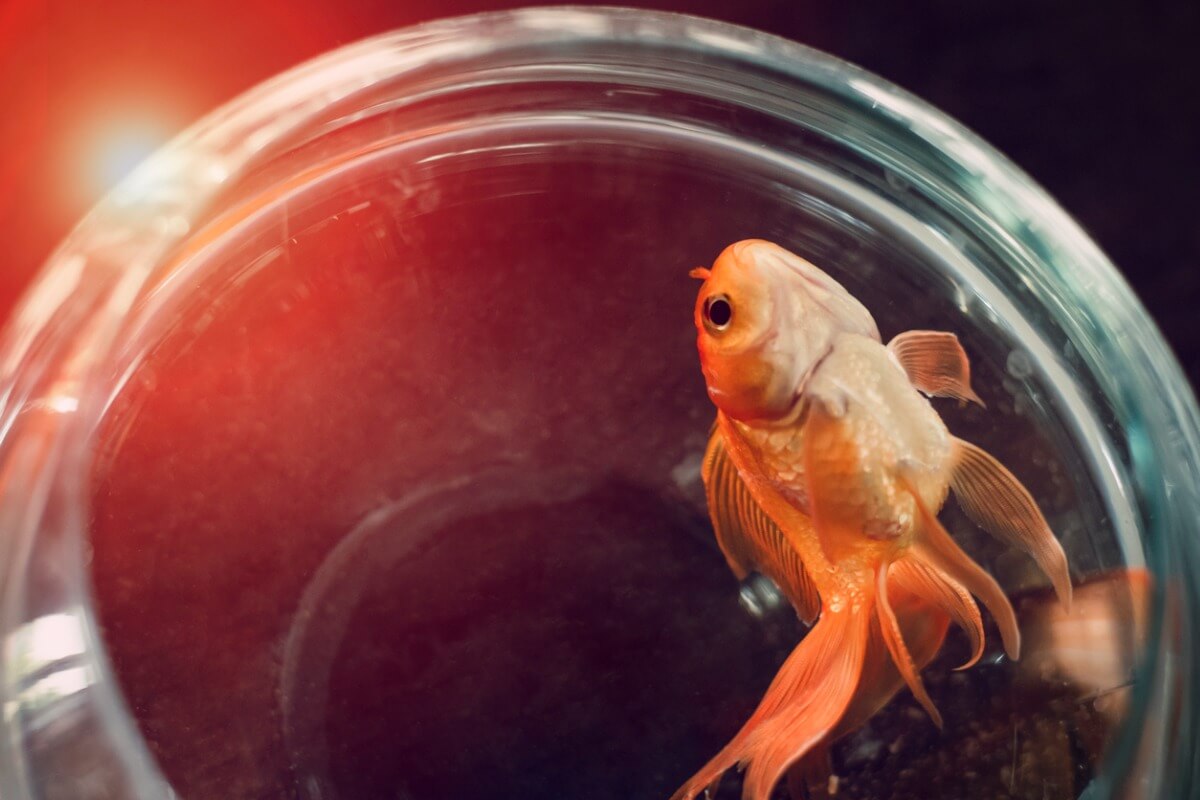Can Fish Drown?


Written and verified by the biologist Samuel Sanchez
Nature has adapted to almost all environmental conditions present on Earth, hence the existence of living beings even in the most remote places (such as hot springs or areas with a high rate of radiation). Some of the animals that attract the most attention due to their physiological characteristics are fish, as they have a way of moving and breathing that are very different from our own. Today we’ve got a curious question for you: can fish drown? Read on and find out!
Have you ever wondered whether fish can drown? It seems unbelievable, but dying from a lack of oxygen underwater is possible.
How do fish breathe?
The term fish is used to describe any aquatic, cranial, gilled vertebrate that doesn’t have digitate limbs. This concept includes sharks, lampreys, manta rays and other living things that don’t have a bony skeleton, but also the typical fish with scales and fins (teleosts).
Fish breathe underwater thanks to special structures known as gills. These are found on each side of the pharynx and are composed of a series of highly segmented filaments, which increase the surface area in contact with the aquatic environment. Many species have a piece that functions as a lid and protects the gill apparatus (the operculum).
Typical fish push water into the mouth with a series of movements, move the water to the gills, capture the oxygen dissolved in the liquid and integrate it into the blood capillaries of the gill filaments. Thus, oxygen is mixed into the blood and carbon dioxide is excreted into the surrounding water mass. The water exits through the space left free by the operculum.
Respiration is much more demanding for fish than for terrestrial vertebrates, as the amount of oxygen dissolved in water is much less than the amount present in the atmosphere. However, they’re able to colonize this environment without dying in the process thanks to the adaptive mechanisms of natural selection.

The exceptions that confirm the rule
Although most fish breathe in the way we’ve just described, some partially skip this mechanism. For example, bettas and other specimens of the suborder Anabantoidei have a very special structure known as a labyrinth. This is a highly vascularized respiratory organ located under the operculum.
Thanks to this special conglomerate, labyrinth fish can obtain oxygen directly from the atmosphere by breathing at the surface of the water, which enables them to live in stagnant water in very bad conditions. The same is true for the lungfishes of the order Dipnoi.
However, a betta fish out of water will still die from lack of humidity and excessive oxygen saturation.
Can fish drown?
The concept of drowning refers to dying by asphyxiation. For this to occur there must have been hypoxia, i.e. a deficiency of oxygen in the animal’s blood, cells, and tissues. Without this gas, the metabolic processes can’t be carried out, and in a short time, a multi-organ failure occurs.
If we take this term as a reference, the answer is that yes, fish can drown underwater. They don’t die like tetrapods from fluid entering their lungs, but, rather, from the absence of oxygen in their own environment. The key term for understanding this conundrum is dissolved oxygen.
Dissolved oxygen is the amount of redundant O₂ dissolved in water. The concentration of free oxygen in the aquatic environment is essential for invertebrates, algae, fish, and microorganisms to survive. As professional websites indicate, the minimum dissolved oxygen to support abundant life in water is 4-5 milligrams per liter.
When does a fish drown?
The concentration of dissolved oxygen in the water dictates when the environment can drown the animal. For example, largemouth bass (Micropterus salmoides) can withstand up to a minimum DO of 5.5 milligrams per liter for 24 hours, while catfish (Ameiurus melas) have a higher tolerance to inclement water with a DO of 3.3 milligrams per liter.
When there isn’t enough dissolved oxygen in the water, the fish’s gills can’t extract enough of this essential gas to nourish its tissues and multi-organ failure occurs. In other words, the animal drowns. This can also occur if water temperatures rise too high, damage occurs to the gills themselves, or chemical compounds are spilled, for example.
Signs that a fish is drowning
Apart from bettas, lungfish, and a few isolated exceptions, every fish will show a number of signs when placed in a hypoxic or anoxic (little or no oxygen) aquatic environment before it dies. These are as follows:
- The fish gasps at the surface: Oxygen levels are higher in surface water, as gas exchange is taking place there. A drowning fish will gasp all the time.
- Lethargic behavior: Muscle and nerve tissues don’t receive enough oxygen, so the animal doesn’t have the strength to move or coordinate effectively.
- Erratic swimming: Same reason as above.
This set of clinical signs is relatively common in overcrowded tanks. If there are too many fish in a body of water, dissolved oxygen can drop to dangerous levels and even kill the fish. Every aquarium professional will tell you that fish can indeed drown in water due to overcrowding.

Fish can die for many reasons in the captive or natural environment and drowning is one of them. While they don’t die from water entering their respiratory tract, lethal hypoxia occurs when the oxygen concentration in the aquatic environment is very low.
All cited sources were thoroughly reviewed by our team to ensure their quality, reliability, currency, and validity. The bibliography of this article was considered reliable and of academic or scientific accuracy.
- Laberynth Fish, Britannica. Recogido a 2 de octubre en https://www.britannica.com/animal/labyrinth-fish
- Dissolved Oxygen in Water, Know your H2O. Recogido a 2 de noviembre en https://www.knowyourh2o.com/outdoor-4/dissolved-oxygen-in-water
This text is provided for informational purposes only and does not replace consultation with a professional. If in doubt, consult your specialist.